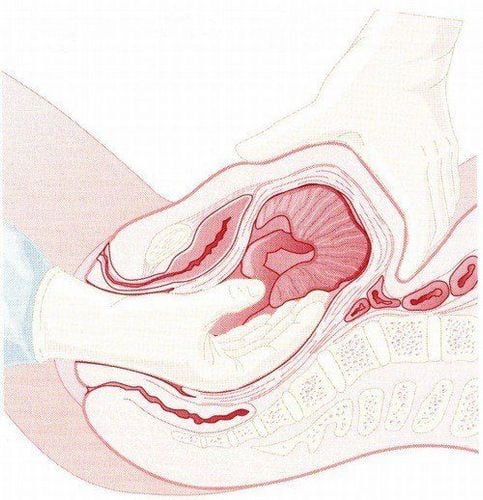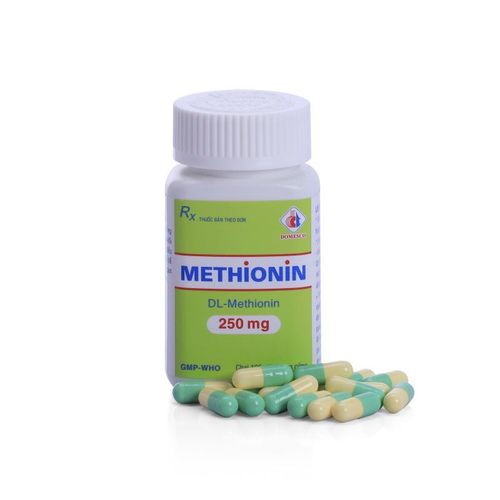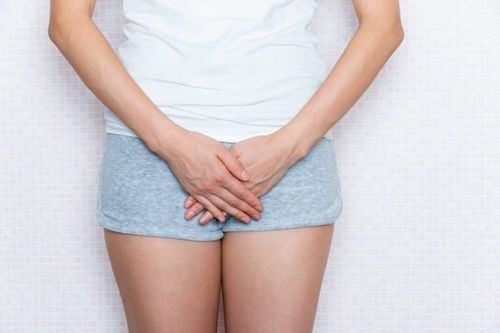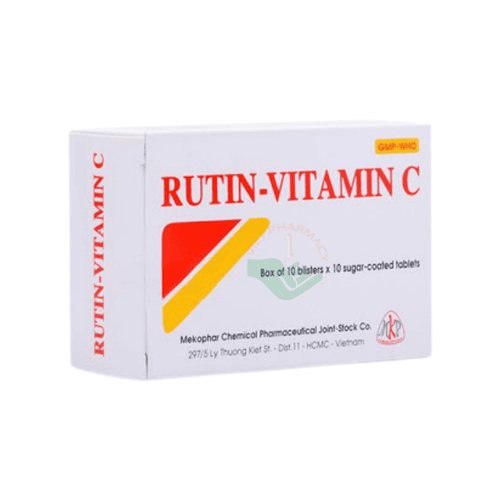This is an automatically translated article.
The article is professionally consulted by an Obstetrician and Gynecologist - Department of Obstetrics and Gynecology - Vinmec Phu Quoc International General Hospital
Postpartum haemorrhage is a serious obstetric complication that can be life-threatening. Usually, bleeding occurs soon after birth. However, there are cases of bleeding after 1 month postpartum. Is this condition dangerous?
1. What is postpartum hemorrhage?
Postpartum haemorrhage is excessive bleeding after labor that can lead to death in the mother. If there is a loss of 500ml of blood after vaginal delivery or from 1000ml of blood after a cesarean section or more, affecting the general condition or the Haematocrit decreases by more than 10% compared to before birth, it means the woman has hemorrhage.According to the time of the stroke, there are 2 types of postpartum hemorrhage:
Primary haemorrhage: Blood loss of more than 500ml within the first 24 hours after birth. 5 out of every 100 women have this condition. The causes of primary haemorrhage are usually uterine atony, residual placenta, lower genital tract tear, uterine rupture, uterine inversion and placental anomaly; Secondary bleeding: Women experience heavy bleeding and abnormalities in the vagina between the first 24 hours and 12 weeks postpartum. Two out of every 100 people will develop secondary hemorrhage.

2. What is 1 month postpartum hemorrhage?
As with information on secondary bleeding, 1 month postpartum haemorrhage can be classified into this group. Even women who have postpartum hemorrhage 2 to 3 months are also classified as secondary hemorrhage (because this phenomenon occurs in about the first 12 weeks postpartum). This condition occurs often due to retained placenta, infection or hematologic disease.Hemorrhage 1 month after delivery is an obstetric emergency but is not unusual. Many pregnant women experience this phenomenon. If detected and treated in time, the health and life of women will be protected.
Trắc nghiệm: Những điều cần biết về kiêng cữ sau sinh
Sau sinh, cơ thể sản phụ sẽ có rất nhiều sự thay đổi, việc thực hiện tốt các kiêng cữ sau sinh và bổ sung đầy đủ các chất dinh dưỡng cho cơ thể sẽ giúp ích rất nhiều trong quá trình hồi phục sức khỏe. Bài trắc nghiệm dưới đây sẽ giúp mọi người có cái nhìn tổng quan về kiêng cữ sau sinh và thực hiện sao cho phù hợp nhất.The following content is prepared under supervision of Thạc sĩ, Bác sĩ y khoa, Tạ Quốc Bản , Sản phụ khoa , Khoa Sản phụ khoa - Bệnh viện Đa khoa Quốc tế Vinmec Phú Quốc
3. Causes and symptoms of postpartum hemorrhage
Common symptoms of postpartum haemorrhage are: excessive bright red vaginal bleeding after childbirth, lower abdominal pain, fever,... due to heavy labor, carrying multiple pregnancies, so the uterus is too tight, amniotic fluid is too large, the baby is too big; weak uterine contractions due to benign tumors or placenta left in the uterus after delivery,...This condition is common in women over 35 years old, overweight, having 4 or more children, pregnant with multiples pregnancy, too large fetus, placenta previa, placental abruption, preeclampsia, high blood pressure, anemia, cesarean section, labor pain over 12 hours,...

4. Is postpartum haemorrhage dangerous?
Cases of early bleeding or bleeding 1 month after birth are very dangerous. According to experts, obstetric bleeding (postpartum haemorrhage), hypertension and infection are the top 3 causes of maternal death in developed and developing countries. It is estimated that every 4 minutes in the world, a woman dies from postpartum haemorrhage.5. Management of postpartum haemorrhage
Management includes active resuscitation, uterine contractions, and management of the cause. Specifically:
Initial treatment: Rub the fundus of the uterus, set up a large needle intravenous line, test the blood count, coagulation, blood group,...; Using uterotonics: Oxytocin, Ergometrine,...; Suture of cervical and vaginal tear: Check carefully because there may be many bleeding sites, it is necessary to avoid stitching on the same garment; Uterine control: Remove the remaining part of the placenta - fetus - placenta; ensure the integrity of the uterus; Uterine tamponade: Using a balloon tampon is effective in cases of bleeding due to uterine atony and bleeding from the lower genital tract; Embolism: Gives successful results in 95% of patients with postpartum haemorrhage; the patient is hemodynamically stable; Surgery.

At Vinmec International General Hospital, there is a package maternity service as a solution to help pregnant women feel secure because of the companionship of the medical team throughout the pregnancy. When choosing Maternity Package, pregnant women can:
The pregnancy process is monitored by a team of qualified doctors. Regular check-ups, early detection of abnormal problems. Maternity package helps to facilitate the birthing process. Newborns receive comprehensive care.
Please dial HOTLINE for more information or register for an appointment HERE. Download MyVinmec app to make appointments faster and to manage your bookings easily.














